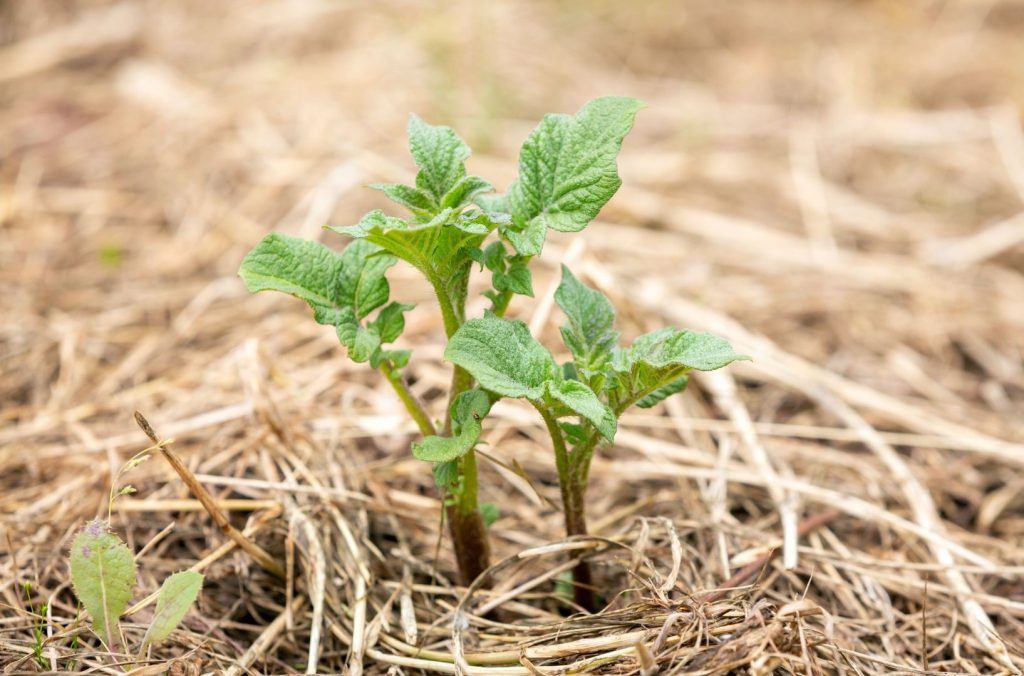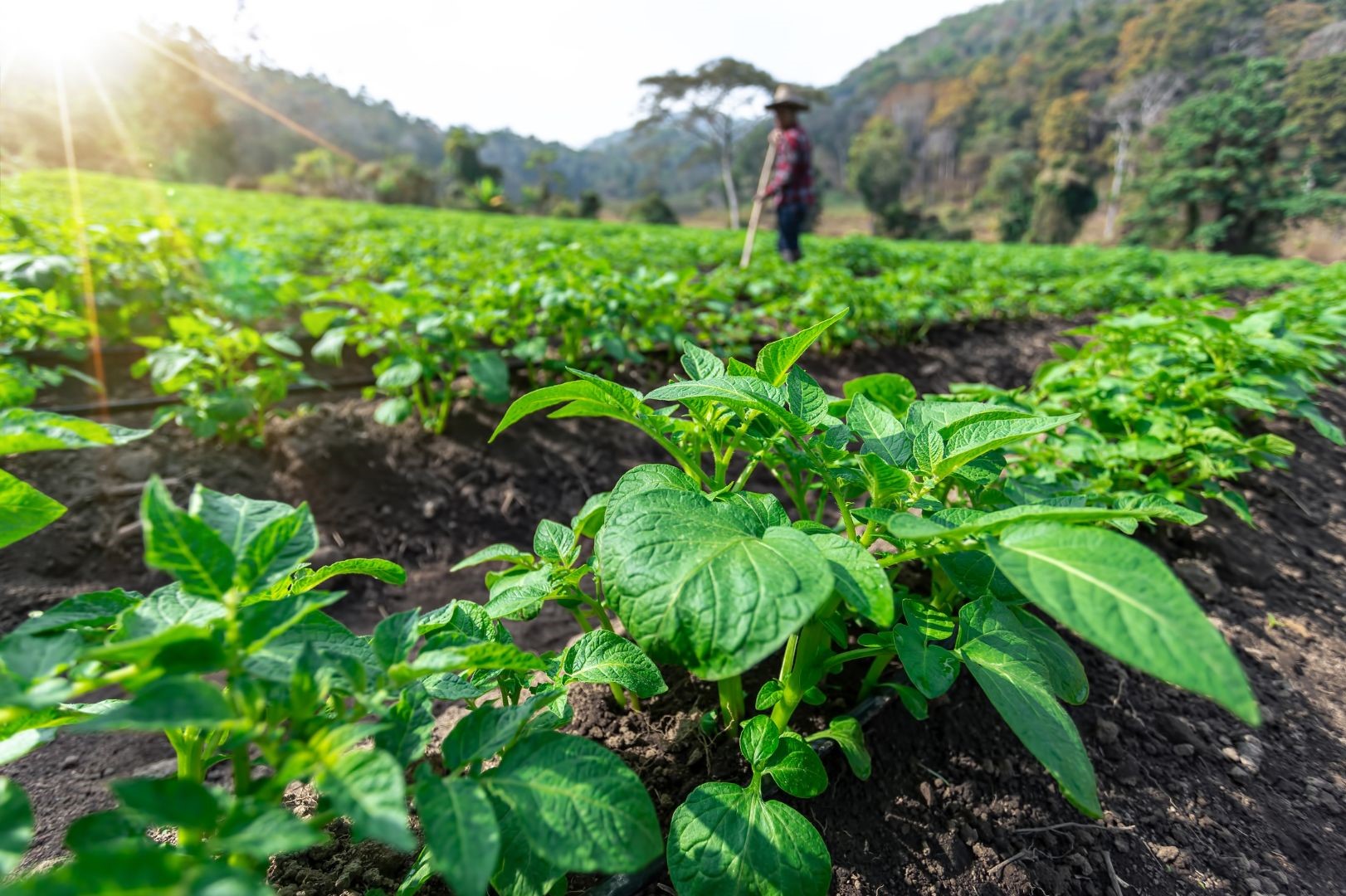Technological Innovations that Revolutionize the Potato Industry
In the previous article we talked about “The Impact of Climate Change on Potato Industry and Possible Solutions“. Now it is time to focus on the solution and inovation transforming the potato industry.
Technological advancements are driving significant changes throughout the potato value chain, from farm to fork. These innovations improve efficiency, productivity, and sustainability while aligning with evolving consumer demands.
Data-driven decision-making: Utilizing GPS, remote sensing technologies like drones, and IoT sensors to gather real-time data on soil conditions, crop health, and microclimates. This data informs targeted interventions, optimizing resource use and minimizing environmental impact.
Variable Rate Technology (VRT): Adjusting inputs like water, fertilizers, and pesticides based on the specific needs of different areas within a field, leading to more efficient resource use and improved yields.
- Automation and Robotics:
Autonomous machinery: Self-driving tractors and harvesters reduce reliance on manual labor, increase efficiency, and address labor shortages.
Robotics in processing: Automated systems for sorting, peeling, and packaging potatoes ensure consistent quality, reduce waste, and enhance food safety.
Enhanced transparency and traceability: Providing a secure and immutable record of the potato’s journey from farm to consumer, offering reassurance about origin, production practices, and quality.
Improved supply chain management: Streamlining logistics, simplifying traceability processes, and facilitating efficient recall procedures in case of quality concerns.
- Biotechnology and Gene Editing:
CRISPR-Cas9 technology: Enabling precise modifications to the potato’s genome to enhance desired traits such as disease resistance, nutritional content, and storage life.
Developing climate-resilient varieties: Gene editing plays a crucial role in creating potato varieties that can withstand the challenges posed by climate change, ensuring future food security.
Connecting growers and buyers: Facilitating direct trade, reducing reliance on intermediaries, and offering growers better access to markets and competitive pricing.
Data analytics and market insights: Providing growers with valuable information on market trends, consumer preferences, and pricing dynamics to inform their production and marketing strategies.
Shifting Consumer Preferences: Towards Health, Convenience, and Sustainability

Consumer preferences are evolving, driven by increased health consciousness, demand for convenience, and a growing awareness of sustainability concerns.
- Health and Nutrition: Consumers seek out potato varieties with:
Lower glycemic index: Catering to individuals managing blood sugar levels and those with diabetes.
Higher nutritional content: Potatoes rich in fiber, vitamins, and minerals are gaining popularity.
Natural pigments: Consumers associate colorful potatoes with added health benefits due to their antioxidant properties.
- Convenience and Snackification:
Processed potato products: Frozen fries, pre-seasoned wedges, and other ready-to-cook options cater to busy lifestyles and the demand for quick and easy meal solutions.
Potato-based snacks: The “snackification” trend fuels the demand for potato chips, bites, and other portable snack options, with a growing preference for healthier baked or air-fried alternatives alongside indulgent options.
- Plant-Based Diets:
Versatility in plant-based meals: Potatoes serve as a valuable source of carbohydrates and can be incorporated into various plant-based dishes, from main courses to dairy-free alternatives like potato-based cheeses and creams.
Growing demand for plant-based options: The rising popularity of vegan and vegetarian diets increases the demand for potato-based products as a key ingredient in plant-based cuisine.
- Environmental Awareness:
Sustainable farming practices: Consumers are increasingly interested in supporting brands that prioritize environmental responsibility and source potatoes from farms employing sustainable practices.
Locally sourced produce: The “locavore” movement promotes the consumption of locally grown potatoes, reducing the carbon footprint associated with transportation and supporting local farmers.
Eco-friendly packaging: Consumers are seeking out potato products with sustainable packaging solutions, such as biodegradable or compostable materials.
Social media plays a significant role in amplifying these trends, providing platforms for sharing recipes, promoting healthy eating habits, and raising awareness about sustainable practices.
Sustainability and Regenerative Agriculture: Building a Resilient Future

The potato industry is actively integrating principles of sustainability and regenerative agriculture to minimize its environmental impact and ensure long-term viability.
- Soil Health as a Foundation:
Crop rotation and cover cropping: These practices improve soil fertility, prevent erosion, and reduce the need for synthetic fertilizers.
Organic amendments: Utilizing compost and manure enhances soil health, increases water-holding capacity, and promotes beneficial microbial activity.
Reduced tillage and no-till farming: Minimizing soil disturbance to improve soil structure, carbon sequestration, and water infiltration.
- Integrated Pest Management (IPM):
Biological control:
- Utilizing natural predators and parasites to manage pest populations.
- Reducing reliance on chemical pesticides.
- Promoting a balanced ecosystem.
Pheromone traps: Disrupting pest mating cycles and enabling early detection of pest outbreaks for targeted interventions.
Pest-resistant varieties: Developing and utilizing potato varieties with natural resistance to common pests, further reducing the need for chemical control methods.
Precision irrigation systems: Delivering water directly to the root zone of plants, minimizing water waste and improving water-use efficiency.
Drought-tolerant varieties: Developing and cultivating potato varieties that require less water, enhancing resilience in regions facing water scarcity.
Water harvesting and recycling: Implementing strategies to capture and reuse water, minimizing dependence on freshwater sources.
- Circular Economy and Waste Reduction:
Utilizing by-products: Finding innovative uses for potato peels, pulp, and other processing by-products, such as creating bioplastics, animal feed, and renewable energy.
Minimizing packaging waste: To reduce environmental impact, implement sustainable packaging solutions, such as biodegradable or compostable materials.
- Sustainability Certifications and Collaborations:
Third-party certifications: Obtaining certifications like Rainforest Alliance or Organic to demonstrate commitment to sustainable practices and meet consumer demand for ethically and environmentally responsible products.
Partnerships and knowledge sharing: Collaborating with research institutions, environmental organizations, and other stakeholders to share best practices and advance sustainable farming techniques.

Challenges and Opportunities in the Potato Market
Despite its importance and continuous advancements, the potato industry faces a complex set of challenges:
Supply Chain Disruptions:
Transportation and logistics: Delays in seed potato shipments due to increased border regulations or phytosanitary concerns can impact planting schedules and market supply.
Storage and preservation: Ensuring proper storage and transportation conditions for perishable potato products is crucial to minimize post-harvest losses and maintain quality.
Market Volatility:
Price fluctuations: Unpredictable weather patterns, changing input costs, and variable consumer demand contribute to price volatility, creating financial uncertainty for growers.
Fertilizer crisis: Rising fertilizer prices increase production costs and squeeze profit margins, posing a significant challenge for potato farmers.
Competition and Market Dynamics:
Alternative crops: Farmers may switch to more profitable crops like corn, soybeans, or wheat, depending on market conditions and government subsidies.
International trade: Competition from countries with lower production costs or favorable trade agreements can impact domestic potato markets.
Shifting consumer preferences: The industry must adapt to evolving consumer demands and dietary trends, such as the growing popularity of low-carb and gluten-free diets.
Strategies to Address Challenges:
Investing in infrastructure: Improving storage facilities and transportation networks to minimize post-harvest losses and ensure efficient delivery of potato products.
Diversifying potato varieties: Developing and cultivating a wider range of potato varieties with different traits to cater to diverse consumer preferences and adapt to varying environmental conditions.
Contractual farming: Establishing agreements between growers and buyers to ensure price stability and provide financial security for farmers.
Policy advocacy: Engaging with policymakers to address trade barriers, promote fair trade practices, and secure support for sustainable farming initiatives.
Market research and consumer engagement: Understanding evolving consumer preferences and dietary trends to develop and market potato products that meet consumer demand.
Conclusion:
The global potato industry in 2023 reflects a dynamic interplay of challenges and opportunities. Climate change, technological advancements, shifting consumer preferences, and market dynamics have created a complex environment that demands adaptation, innovation, and collaboration.
Despite the looming threat of climate change, the industry is actively pursuing solutions through the development of resilient potato varieties, improved water management practices, and knowledge sharing among stakeholders. Technological innovations, from precision agriculture and automation to blockchain and gene editing, are revolutionizing the industry, enhancing efficiency, transparency, and sustainability throughout the value chain.
The industry is also responding to evolving consumer preferences, catering to the demand for healthier potato varieties, convenient and snackable options, and products that align with plant-based and environmentally conscious lifestyles. A growing focus on sustainability and regenerative agriculture is transforming farming practices, minimizing environmental impact, and ensuring the long-term health of the land.
While challenges such as supply chain disruptions, market volatility, and competition remain, the potato industry demonstrates remarkable resilience and adaptability. By embracing innovation, fostering collaboration, and prioritizing sustainability, the industry is well-positioned to overcome obstacles and ensure its continued success. As we look to the future, ongoing research, technological advancements, and a commitment to responsible agricultural practices will be crucial for ensuring the potato’s enduring role as a vital source of sustenance for generations to come. The potato industry, with its rich history and unwavering commitment to progress, is poised to remain a cornerstone of global food security and a testament to the power of human ingenuity in feeding the world.










































































